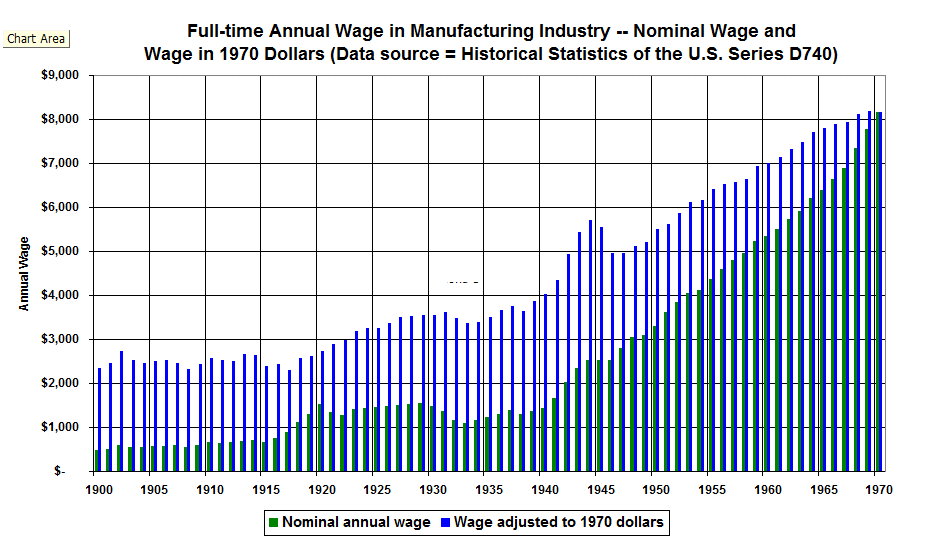“It is not the employer who pays the wages. Employers only handle the money. It is the customer who pays the wages.” -Henry Ford
In 1914, Henry Ford raised the minimum wage of his factory workers from $2.86 per nine hour day to $5.00 per eight hour day, thus nearly doubling his workers salary. Henry was able to make these changes because of the profits from the sales of the Model T. Henry decided to reward his workers because he thought that if his workers worked hard making him money, he should repay them. Today the United Auto Workers minimum wage at Ford Motor Company is $55.00 per hour. The changes that Henry made to the work environment later became the foundations for the labor laws of today. The Fair Labor Standards Act established the standard 40 hour workweek. The Federal minimum wage was increased to $6.55 per hour on July 24, 2008.
With these changes, the quality of his employees’ life was greatly improved. By shortening the work day, families had more time to spend with each other. For the first time, his employees had some disposable income to spend on their families. With the extra money the workers were making, they were able to buy nicer houses, fancier clothes, toys for their children and had more time to play with their children. This stimulated the economy and created a middle class in

This graph depicts in green the average annual wage of the manufacturing industry as recorded for the year. The blue represents the wage in 1970 dollars. In 1970, the Federal minimum wage was $1.45 per hour which equals $3,016.00 annually. Therefore, you can conclude from this graph that in 1970 the manufacturing industry's average wage was more than double the Federal minimum wage.